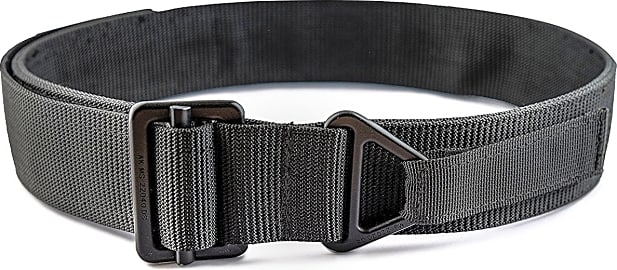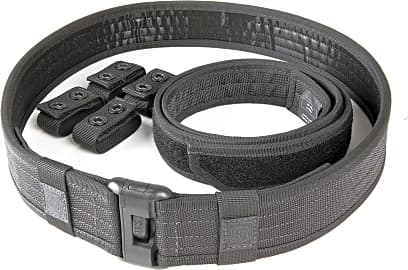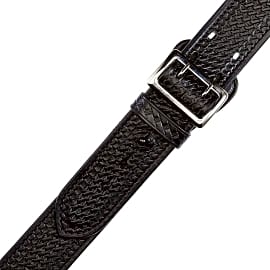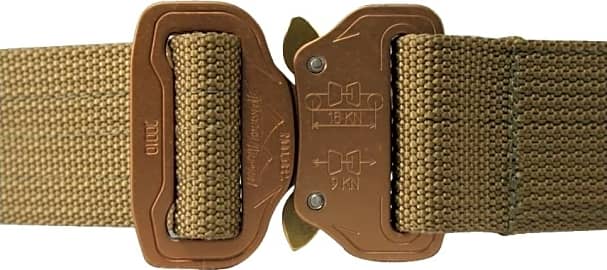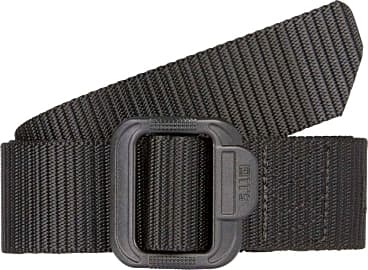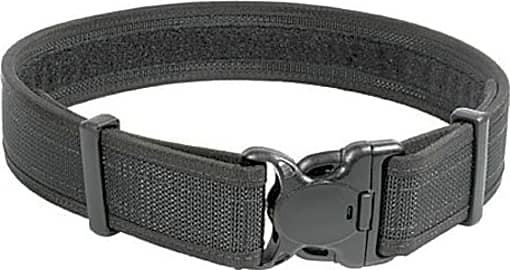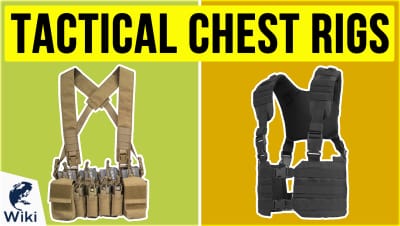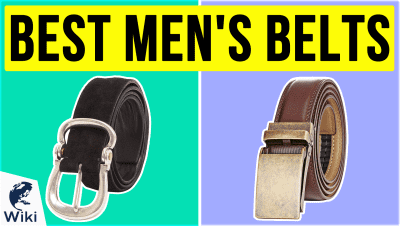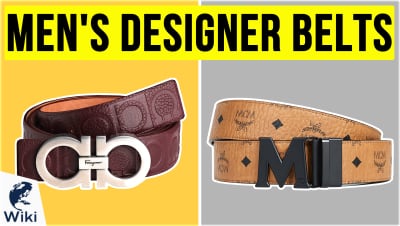The 10 Best Duty Belts

This wiki has been updated 40 times since it was first published in July of 2015. Law enforcement, military personnel and security guards need to carry a variety of tactical equipment at all times, some of which can be quite heavy. The right duty belt, such as those from our selection, can make life a lot easier and more comfortable when lugging around weapons, ammunition, a flashlight, handcuffs, batons, and all the other gear essential for the job. When users buy our independently chosen editorial picks, we may earn commissions to help fund the Wiki.
Editor's Notes
July 14, 2020:
While comfort is obviously a factor, above all else, duty belts need to be durable. With this in mind, we focused on identifying models made from exceptionally tough materials, like nylon and leather. While each has its own pros and cons, both of these materials can stand up to the rigors of extreme use.
During the most recent update, we found that the majority of our previous recommendations retained their places as some of the best options available on the market. Once exception to this was the Klik Cobra Rigger, which we decided to remove as there are simply too many complaints of it needing constant re-tightening, and that is not only an unacceptable inconvenience, but it can also be dangerous in certain situations. It was replaced with the OneTigris Patrol, which we like for the included padded sleeve that makes it significantly more comfortable than many other models. It also offers MOLLE-compatible webbing that allows it to accommodate a lot of gear and making it perfect use in Airsoft, military missions, and anywhere else where you will need to carry a lot of backup ammo and other vital equipment that may not fit on your chest rig. The Condor Outdoor LCS Cobra is another option that offers MOLLE-compatible webbing and features some extra padding. We actually think many users will like this one better than the OneTigris Patrol because of its smaller form, however, it is considerably more expensive.
Officers looking for something they can wear to formal uniformed events will want to consider the Aker Leather B01 Sam Browne, which is crafted from leather and has a traditional double-prong chrome buckle, or the Safariland 94, if they prefer something a little more streamlined.
If you want a basic and affordable option, but one that is still reliable, we recommend looking to the Wolf Tactical Heavy Duty Rigger or 5.11 Tactical TDU. The former offers non-incremental size adjust and an almost indestructible metal buckle, while the latter fits into most standard belt loops and features a reversible design.
June 19, 2019:
When it comes two duty belts, there are two schools of thought. Traditionalists tend to prefer leather options, while most others prefer a more modern material, like ballistic nylon. Each of these has its pros and cons. For example, leather options, like the Aker Leather B01 Sam Browne, will usually have a longer service life, but are generally uncomfortable until they have been broken in a bit. They are often more expensive than nylon options, too. It is a smart choice if you are wearing your uniform to a upscale event, though.
The majority of the options on our list are crafted from some form of nylon, since they offer greater comfort and a very high tensile strength. Many manufacturers say they see most of their consumers shifting towards them, too. The Condor Outdoor LCS Cobra grabbed our #1 spot due to the padded liner and attachment versatility the MOLLE slots offer. The Bianchi AccuMold 7200, which is in our #3 spot is favored by many police officers. It seems to have the perfect balance of flexibility and stiffness for most. If you are looking for the best value option, consider the 5.11 Tactical Sierra Bravo, which comes with an inner belt and includes four keepers to hold the outer belt in place. The 5.11 Tactical TDU is conveniently metal-detector friendly too, so if you plan on wearing your belt when traveling and not on duty, it is a good choice.
If you like the look of leather options, but want the flexibility of nylon, we recommend checking out the Safariland Buckleless 94m, which is crafted from a special laminate material. It combines many of the benefits of each of both leather and nylon, with few of their downsides. Those on a very tight budget, will probably be best served by the affordable Wolf Tactical Heavy Duty Rigger, though some may find the tip pokes them a bit.
Special Honors
Senshi Belt Used by many special ops soldiers and developed by battlefield soldiers, you can rest assured this camouflage, nylon-weave option will never let you down. It accepts a wide range of holsters and pouches and has a tensile strength of more than two tons. Plus, it features PALS webbing for easy attachment of most gear. ronintactics.com
What Separates a Good Duty Belt From a Great One?
Almost all duty belts come with a buckle that is made out of plastic.
The first feature of a duty belt that really makes a difference is fit. That is to say that if a duty belt doesn't sit well on your waist, it's not going to be a valuable asset. With that in mind be sure to check the maximum width on any belt you might be interested in purchasing. There are certain models that won't fit anything beyond a 42" waist.
In addition, you'll want a duty belt that doesn't bunch, or droop, or cause you to itch around the waist. Most reliable duty belts have a band that is made out of either nylon, or polyester. Be sure to read each belt's product description to confirm that the fabric and its webbing have been reinforced.
Once you've found a belt that'll sit well, the next step is to make sure that said belt features efficient pockets that won't fray or tear. Most pockets (AKA "pouches") are comprised of the same general fabric as a duty belt's waistband. Assuming that's the case, you'll want to verify that the fabric is machine-washable. A duty belt is useless if its pockets - or its waistband - begin to shrink.
The majority of duty belts come with a holster, and they also feature several pockets of varying sizes. Large items, whether they be weapons or utilities, usually sit comfortably in a tight-fitting pocket, while small objects, like pens or other stationary, usually sit better in a sealed pocket that allows them to breathe.
The final feature you'll want to take note of is a duty belt's buckle. Yes, a buckle may seem minor, but it becomes important when you happen to be carrying around a great deal of weight. Almost all duty belts come with a buckle that is made out of plastic. What differentiates one buckle from another is the locking mechanism. Ideally, you'll want that locking mechanism to fasten securely so you don't have to waste any time clicking it back into place.
How to Arrange Your Duty Belt Effectively
If you wear a duty belt as a requirement for some form of military or public service, you want to maintain a very clear and tactical organization for every utility. There are several reasons for this, not the least of which being that you may need to reach for a specific weapon in a split-second situation. If you don't know where each item is, this could have dire consequences.
If you don't know where each item is, this could have dire consequences.
Obviously, any firearm should be holstered, with that holster residing along the hip side of your belt, corresponding with whatever hand you use to hold a gun. Long, slim pockets, like those relegated for flashlights or pepper spray, should be located around the side or the back of the belt. Placing a long, solid object along the front of your waistband is not only cumbersome, it could - and probably will - result in you hurting yourself.
If you carry a lot of equipment, keep in mind that stationary (e.g., pens and notepads), and even handcuffs, can fit inside any pants pocket, thereby easing the burden on your belt. If you carry a walkie talkie, you should place the handset on whatever hip rests opposite your firearm. This way you can clip a shoulder extension to your breast pocket (or collar), allowing you to hear the walkie, while also being able to see the handset, so you can adjust the frequency, or channel.
A Brief History of The Duty Belt
Duty belts were first used in the UK during the late 1800s, when police were required to carry so much equipment that it no longer made sense for them to force items into their pockets. These early belts were made of leather, and the pouches were not detachable. A standard duty belt was made to hold a truncheon, a firearm, several rounds of ammunition, a notepad with a pencil, a flashlight, and a whistle.
These early belts were made of leather, and the pouches were not detachable.
Throughout the 1900s, a lot of changes were made to the duty belt. The whistle pouch was replaced by a walkie talkie clip, and certain belts were designed with built-in "keepers," that could be attached to the trousers so that a belt wouldn't sag or droop around the waist.
During the second half of the 20th Century, the majority of ammunition pouches were refashioned to carry magazine clips. In addition, the standard leather duty belt gave way to nylon and polyester. Most waistbands came equipped with detachable pockets, which gave officers the option to simply buy a new pocket (as opposed to a new belt). This was beneficial, particularly given utilities like pepper spray and taser guns were easing their way into the mix.
Today's duty belts come with more detachable pockets than ever. Certain belts come with pouches for disposable gloves, a Swiss army knife, a first aid kit, and more. The idea is to have these pockets on hand if an officer needs them. With that said, it is not uncommon for a few of these pockets to remain largely unused.


